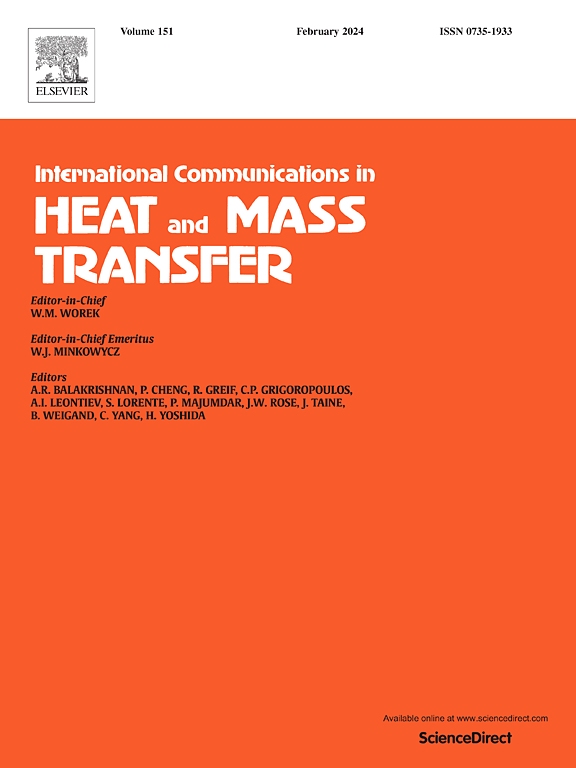Numerical modelling and mechanism of water-heat-deformation of subgrade under heating effect in cold regions
IF 6.4
2区 工程技术
Q1 MECHANICS
International Communications in Heat and Mass Transfer
Pub Date : 2025-03-28
DOI:10.1016/j.icheatmasstransfer.2025.108911
引用次数: 0
Abstract
Heating method shows considerable potential for mitigating frost heave of subgrade in cold regions. However, the water-heat-deformation characteristics of subgrade under the coupling effect of freezing-thawing and heating effect remain unclear, which hampers the optimization and widespread application of heating method. Therefore, this paper proposes a numerical model of subgrade water-heat-deformation considering heating effect. The influence and mechanism of heating effect on water-heat-deformation of subgrade is systematically analyzed. The results show that the heating effect changes the water-heat-deformation state of subgrade. Furthermore, the combined influence of shady-sunny slope effect and ballast layer ensures that ground temperature near the subgrade center remains above 0 °C, thereby preventing the formation of ice lenses and frost heave. However, the shoulders on both sides enter a freezing state, and freezing rate, freezing depth and frost heave are reduced by more than 45 %, 60 % and 60 % respectively compared with the comparison subgrade. The freezing depth, driving force and rate of water migration are significantly affected by heating effect, which increases the pathways of water upward migration and greatly weakens the segregated frost heave of subgrade. This is the primary mechanism through which the heating method effectively mitigates frost heave in subgrades.
寒区热效应下路基水-热变形数值模拟及机理
加热法在缓解寒冷地区路基冻胀方面显示出相当大的潜力。然而,路基在冻融和热效应耦合作用下的水-热变形特性尚不清楚,这阻碍了加热方法的优化和广泛应用。为此,本文提出了考虑加热效应的路基水-热变形数值模型。系统分析了热效应对路基水热变形的影响及机理。结果表明,热效应改变了路基的水-热变形状态。遮阳坡效应和压载层的共同作用保证了路基中心附近的地温保持在0℃以上,从而防止了冰透镜和冻胀的形成。但两侧肩位进入冻结状态,冻结率、冻结深度和冻胀分别比对照路基降低45%、60%和60%以上。加热效应对冻结深度、动力和水迁移速率有显著影响,增加了水向上迁移的路径,大大减弱了路基的离析冻胀。这是加热方法有效缓解路基冻胀的主要机理。
本文章由计算机程序翻译,如有差异,请以英文原文为准。
求助全文
约1分钟内获得全文
求助全文
来源期刊
CiteScore
11.00
自引率
10.00%
发文量
648
审稿时长
32 days
期刊介绍:
International Communications in Heat and Mass Transfer serves as a world forum for the rapid dissemination of new ideas, new measurement techniques, preliminary findings of ongoing investigations, discussions, and criticisms in the field of heat and mass transfer. Two types of manuscript will be considered for publication: communications (short reports of new work or discussions of work which has already been published) and summaries (abstracts of reports, theses or manuscripts which are too long for publication in full). Together with its companion publication, International Journal of Heat and Mass Transfer, with which it shares the same Board of Editors, this journal is read by research workers and engineers throughout the world.

 求助内容:
求助内容: 应助结果提醒方式:
应助结果提醒方式:


